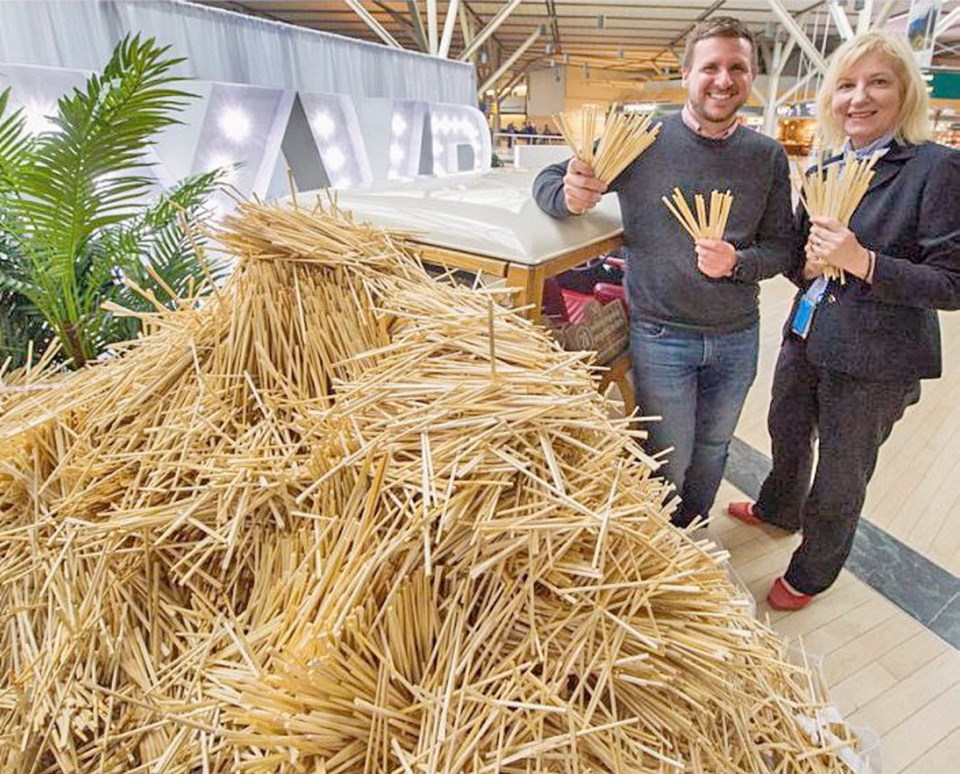VANCOUVER — At Vancouver International Airport, beside Bill Reid’s famous Spirit of Haida Gwaii jade canoe sculpture, sits a brand-new installation: a beige Mini car with a giant pile of chopsticks spilling out from the trunk and onto the ground.
The pop-up installation at the international departures terminal, near the food court, marks an unusual milestone for YVR.
“We’re very excited. We’ve been collecting chopsticks since December 2016, and today we officially recycled our one-millionth chopsticks,” said Marion Town, director of environment for the Vancouver International Airport Authority.
The airport, which had close to 26 million passengers travel through its terminals, food court, and eateries last year, ends up with a lot of a discarded chopsticks.
As part of a broader environmental management plan that aims to reduce greenhouse gas emissions, potable water use, and divert waste from landfill, it partnered with Vancouver-based ChopValue to collect and recycle the bamboo utensils.
The company, which collects chopsticks from restaurants and malls across the Lower Mainland, turns the chopsticks into high-value housewares, such as coasters, yoga blocks, hexagon wall display tiles, and furniture.
Some of ChopValue’s upcycled items are displayed at the installation, including a restaurant table and a couple of benches that are prototypes of products that will be used at a new expanded international terminal at YVR in 2020.
It’s an example of the chopsticks going full circle and an example of the circular economy, said Town.
“It’s pulling items that are recoverable and repurposing them as items that we can use and live with,” she said. “And they look so beautiful when they’re transformed.”
The chopsticks are collected from the international terminal’s food court where passengers can drop off their trays and staff sorts them at a waste sorting area, ensuring that as much material as possible is properly sorted and diverted from the landfill, as well as from smaller bins throughout the airport.
Before, the chopsticks would be dumped as trash or, at best, end up in the compost waste stream. That’s not ideal, said Felix Böck, founder and CEO of ChopValue. “You have to imagine what 9,000 kilograms [the estimated weight of one million chopsticks] would look like per year, and how that would impact the compost stream and hamper the biodegradation process.”
Composting them is also a massive waste of resources, he added. The utensils are usually imported from Asia to Vancouver, travelling thousands of kilometres, only to be thrown out in 20 minutes. “Why should we feel good about composting it?”
While it took the airport three years to hit one million chopsticks, with greater awareness and better staff training, Böck expects the pace to increase.
“In the future, if we do the best job we can, it might be one million chopsticks a year that we target transforming to new products from YVR,” he said.
Across Metro Vancouver, ChopValue collects about 350,000 chopsticks weekly from about 300 partners.



